Pardot’s ability to measure and report on marketing efforts will show you which strategies are working best and help you make data-informed decisions about your campaigns, and determine your return on marketing investment (ROMI).
There are many ways to learn about the success of your campaigns in Pardot. Some of the report types we recommend focusing on include:
- Campaign reports
- Conversion reports
- Email reports
- Form reports
- Salesforce reports
Some of these you can view directly in Pardot, while others are accessible through integration with Salesforce. Let’s start with viewing metrics for campaigns within Pardot.
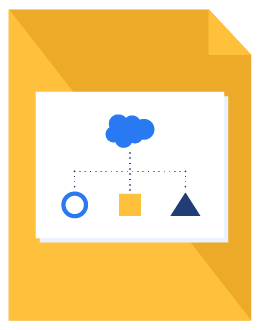
B2B Marketer’s Guide to Pardot
Don’t have time to read the full guide right now? Download the B2B Marketer’s Guide to Pardot to read at your convenience.
Pardot campaign reporting
Pardot campaign reports allow you to track the performance of each individual Pardot campaign, and campaign performance as a whole.
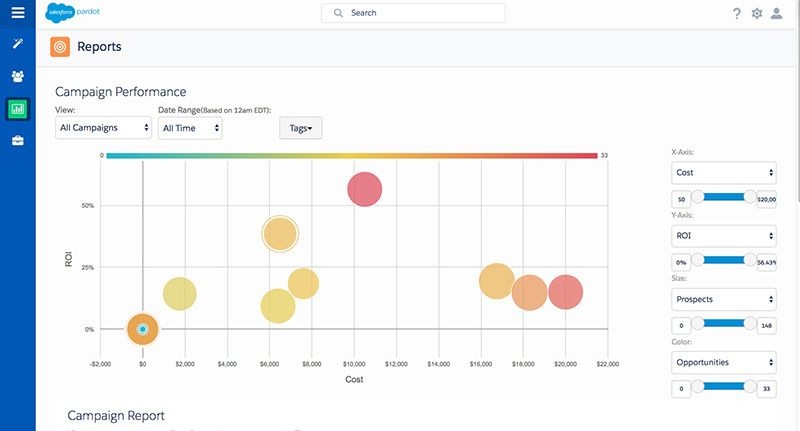
These reports can be useful for obtaining a high-level overview of how Pardot campaigns are performing and contributing to revenue.
Depending on what type of information you’ve entered about your campaigns, you’re able to see metrics such as:
- Total ROI for individual campaigns
- Conversion rate from visitor to prospect and prospect to opportunity
- Cost per opportunity
Pardot conversion reports
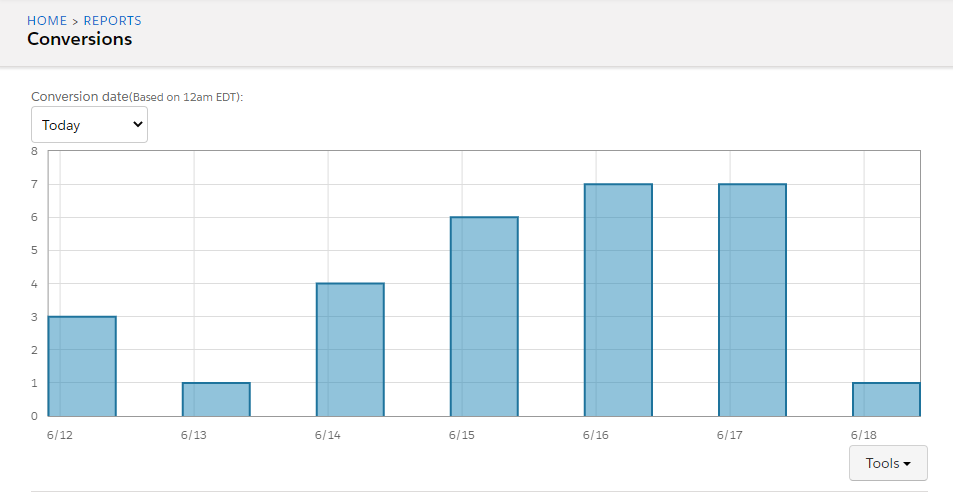
Conversion reports allow you to view which campaigns and assets are generating new prospects on a day-to-day basis. This can be helpful for understanding your most popular content and effective conversion points.
Pardot email reports
Pardot email reports highlight how individual email templates are performing, including delivery rate, open rate, click-through rates, and opt out rate.
These reports help you decipher how certain emails are resonating with prospects, and even help you identify specific templates that are negatively impacting the deliverability of your Pardot emails.
For example, if you see that a large percentage of the emails bounced, then you should investigate the quality of your prospect data and remove out-of-date contact information.
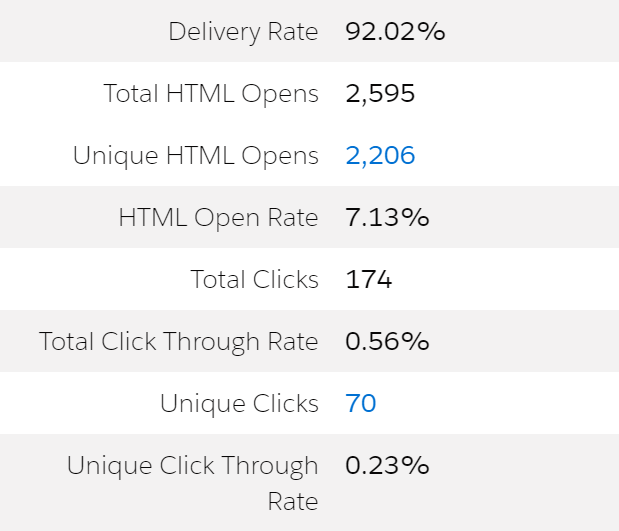
Pardot form reports
Similarly to email reports, form reports let you see how well individual forms convert prospects. They also give you useful information about form errors that are preventing prospects from converting.
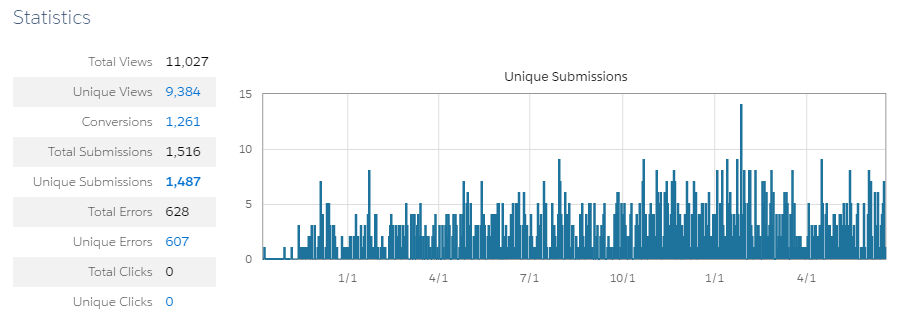
Pardot Reporting in Salesforce
When your Pardot instance is integrated with Salesforce, you can access much more functionality for reporting and tracking your most effective marketing efforts.
You can see from our sample reports below that Salesforce lets you pull a variety of helpful information from Pardot and compile with Salesforce’s pipeline and revenue data. For example, one of our Salesforce reports keeps track of the content campaigns that convert the most marketing-qualified leads.
- MQL source attribution
- Most effective conversion points
- Sources of MQLs converted to SQLs
- Revenue generated from MQLs
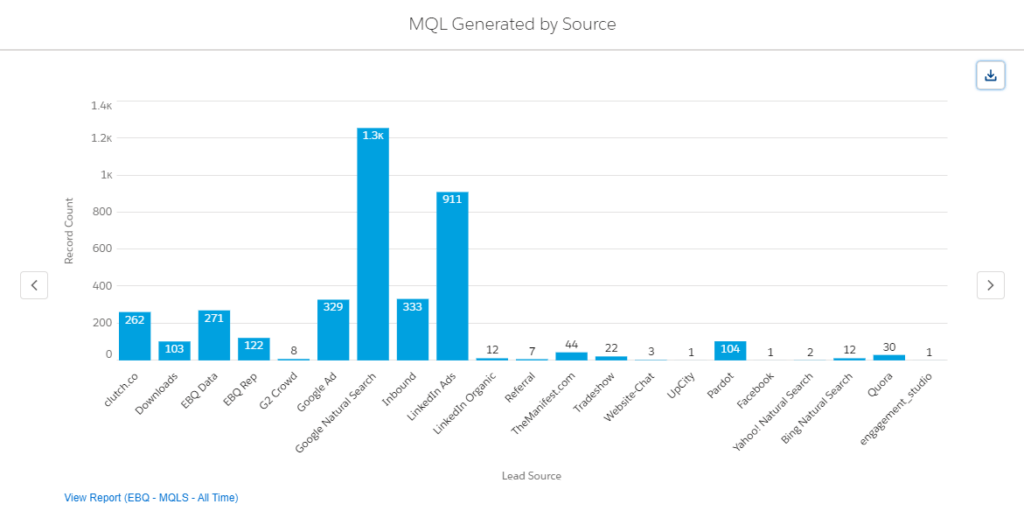
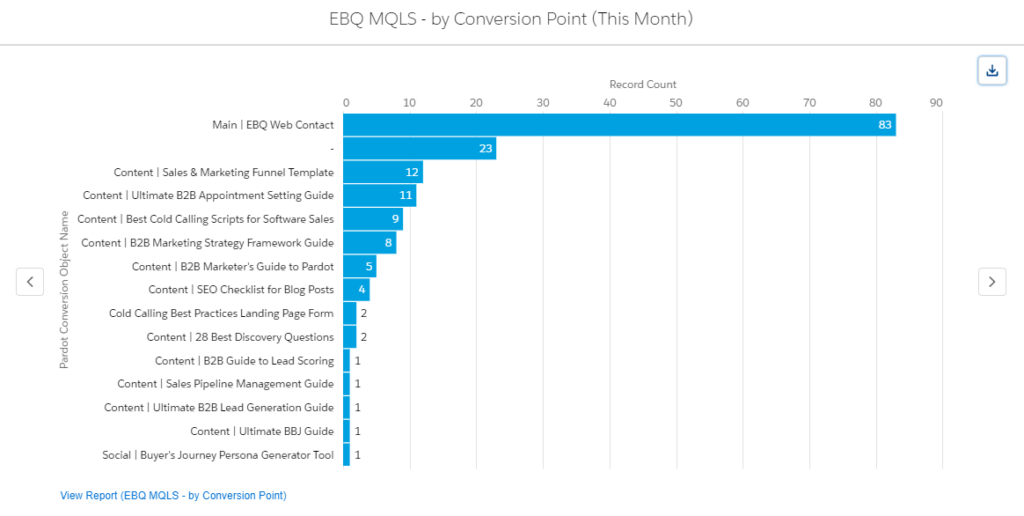
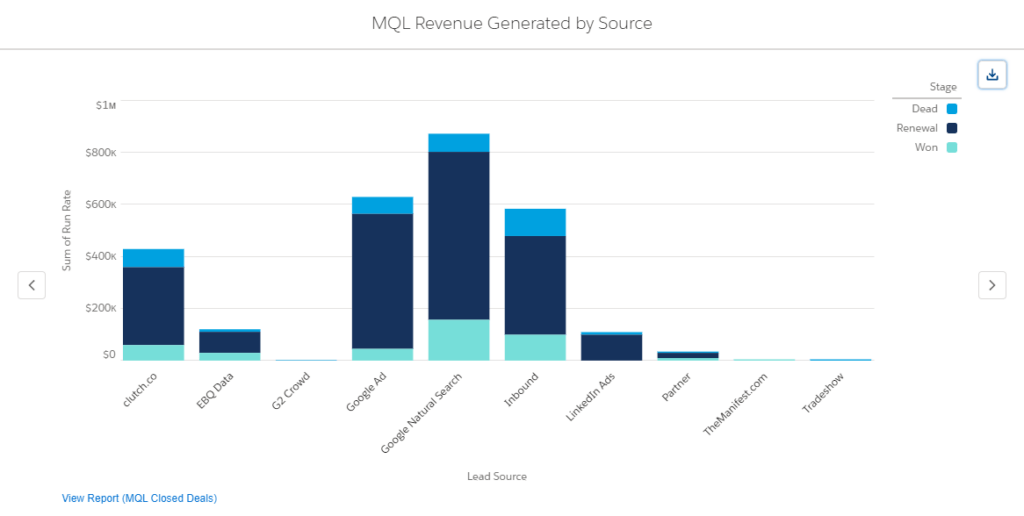

Integrating with Salesforce gives both your marketing and sales teams the same view of marketing performance and how it plays into sales revenue. For even more data, we recommend tapping into B2B Marketing Analytics, a feature of Einstein Analytics.
B2B Marketing Analytics
B2B Marketing Analytics is an app in Salesforce’s Einstein Analytics that makes it very simple to create dashboards and visualize marketing metrics from Pardot. If you purchased Pardot Plus or Advanced after February 2019, B2B Marketing Analytics is included. Otherwise, it can be purchased as an add-on.
Out of the box, it includes several default dashboards that are extremely helpful for beginners, or for just speeding up the reporting process. You can easily analyze marketing’s impact on pipeline and even predict impact, with default and custom reports for multi-touch attribution, campaign performance, and the full marketing lifecycle.

Two of our favorite dashboards available in B2B Marketing Analytics are the Marketing Manager Dashboard and the Engagement Dashboard.
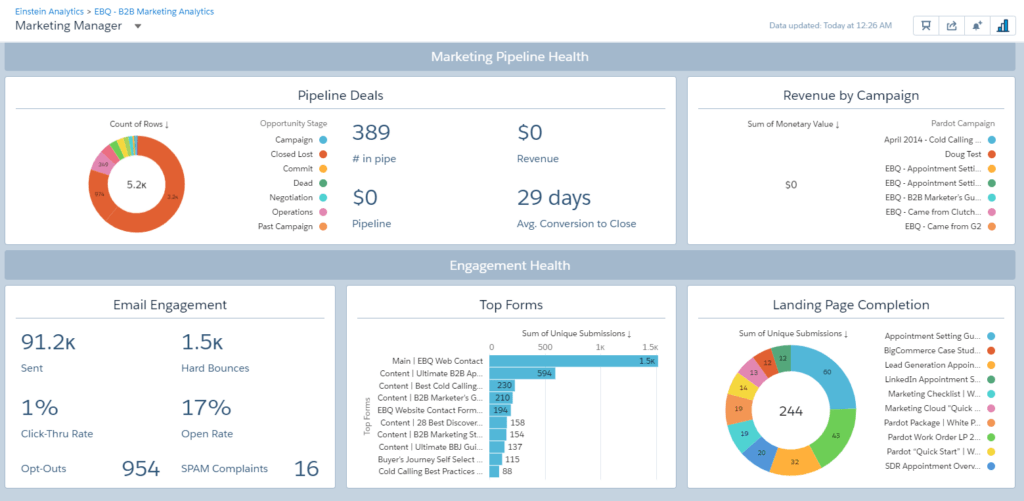
The Marketing Manager Dashboard gives you a comprehensive overview of marketing efforts at a glance, broken down by marketing pipeline health and engagement health.
From this default dashboard, we can see how many marketing-sourced deals are in various sales pipeline stages. We can also view revenue by campaign, general email performance, and top-performing forms and landing pages.
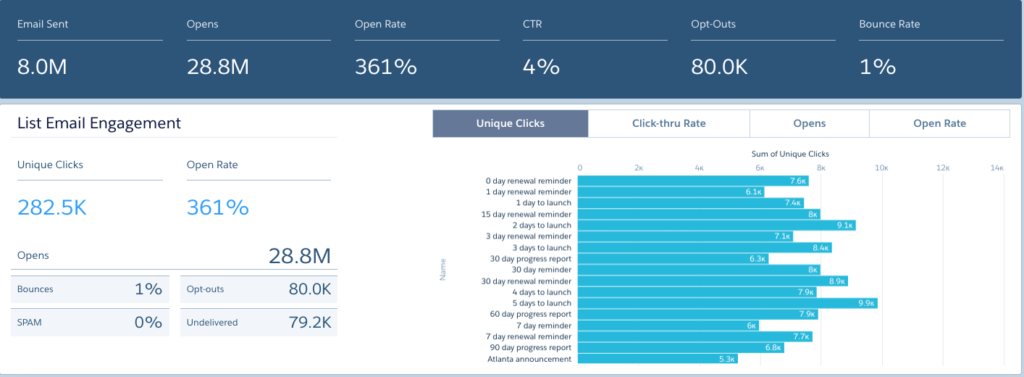


The Engagement Dashboard gives us much more granular metrics about different Pardot assets like email lists, forms, landing pages, and email templates. Viewing all of this data in one place allows us to make informed decisions about email campaigns and make improvements that benefit our pipeline.
And by having this data accessible in Salesforce’s Einstein Analytics, our sales team and other stakeholders in our organization can easily analyze marketing’s impact too.
Plan, report, improve
You can see that Pardot is a powerful platform that can assist in any point of your marketing strategy — from initial campaign planning to reporting on ROI.
If you follow all of the strategies and best practices in this guide, you’ll be well on your way to generating more leads, nurturing more prospects, and converting more customers through marketing automation.
And if you ever need assistance getting full utility from your investment in Pardot, EBQ’s certified Pardot Specialists are always here to help. Contact EBQ to learn more.



